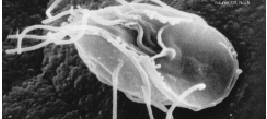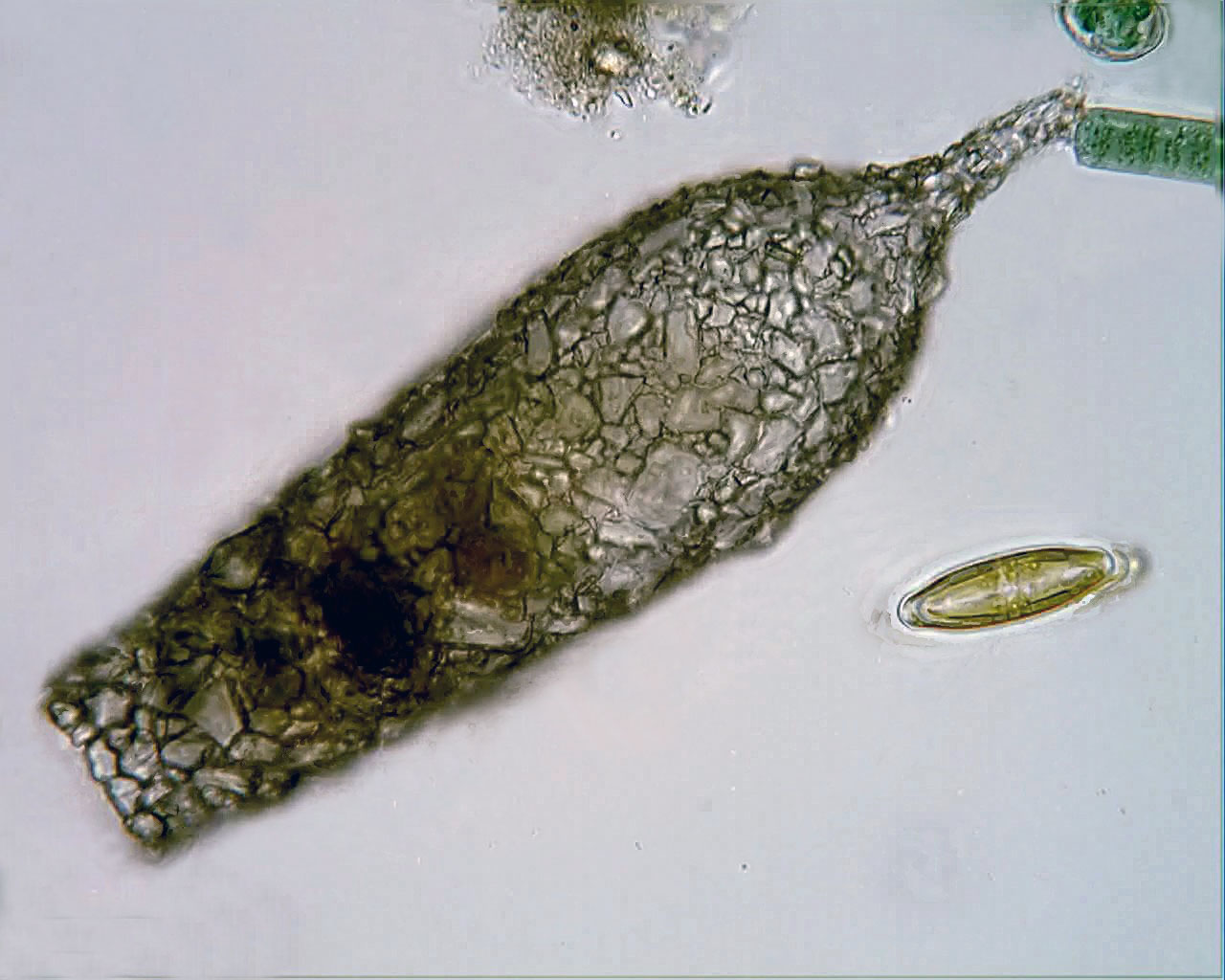|
Difflugidae
''Difflugia'' is the largest genus of Arcellinida, one of several groups of Tubulinea within the eukaryote supergroup Amoebozoa. Arcellinida species produce shells or tests from mineral particles or biogenic elements (e.g. diatom frustules) and are thus commonly referred to as testate amoebae or shelled amoebae. ''Difflugia'' are particularly common in marshes and other freshwater habitats. History The genus ''Difflugia'' was initially discovered in 1815 by L, Leclerc, but its infra-generic classification as a group is still unclear. The genus ''Difflugia'' is the oldest and most diverse of the testate amoebae. It contains more than 300 species and countless subspecies since even minor differences in morphology result in classification as a new species. In 1958, Gauthier-Lièvre and Thomas divided the genus into 10 groups depending on difference in shell morphology. These 10 groups are based on a survey conducted of the African species of ''Difflugia'' The 10 shell shape cl ... [...More Info...] [...Related Items...] OR: [Wikipedia] [Google] [Baidu] |
Arcellinida
Arcellinid testate amoebae or Arcellinida,http://www.microscopy-uk.org.uk/mag/artjun03/gsamoebae.html Testate amoebae, peat bogs and past climates. accessed 16 march 2007 Arcellacean or lobose testate amoebae are single-celled protists partially enclosed in a simple test (shell). Arcellinid testate amoebae are commonly found in soils, leaf litter, peat bogs and near/in fresh water. They use their pseudopodia, a temporary cell extension, for moving and taking in food. Like most amoebae, they are generally believed to reproduce asexually via binary fission. However a recent review suggests that sexual recombination may be the rule rather than the exception in amoeboid protists in general, including the Arcellinid testate amoebae. Morphology Arcellinida always have a shell or test. The tests lie outside the cell membrane and consist of organic or mineral materials that are either secreted or incorporate external particles. The test has a single main opening. Simple tests are m ... [...More Info...] [...Related Items...] OR: [Wikipedia] [Google] [Baidu] |
Tubulinea
The Tubulinea are a major grouping of Amoebozoa, including most of the more familiar amoebae genera like ''Amoeba'', '' Arcella'', '' Difflugia'' and '' Hartmannella''. Characteristics During locomotion most Tubulinea have a roughly cylindrical form or produce numerous cylindrical pseudopods. Each cylinder advances by a single central stream of cytoplasm, granular in appearance, and has no subpseudopodia. This distinguishes them from other amoeboid groups, although in some members this is not the normal type of locomotion. Classification This class was anticipated by some biologists such as Jahn, who grouped all amoebae with granular pseudopodia together, but most split the lobose amoebae into testate Testacealobosia and naked Gymnamoebia. These latter are polyphyletic, but molecular trees by Bolivar ''et al.'' identified a core monophyletic subgroup. Subsequent studies showed the testate lobose amoebae belong to the same group, which was thus renamed Lobosea ''sensu stric ... [...More Info...] [...Related Items...] OR: [Wikipedia] [Google] [Baidu] |
Amoebozoa
Amoebozoa is a major Taxonomy (biology), taxonomic group containing about 2,400 described species of Amoeba, amoeboid protists, often possessing blunt, fingerlike, Pseudopod#Morphology, lobose pseudopods and tubular mitochondrial cristae. In traditional classification schemes, Amoebozoa is usually ranked as a phylum within either the kingdom (biology), kingdom Protista or the kingdom Protozoa. In the classification favored by the International Society of Protistologists, it is retained as an unranked "supergroup (biology), supergroup" within Eukaryota. Molecular genetics, Molecular genetic analysis supports Amoebozoa as a monophyletic clade. Modern studies of eukaryotic phylogenetic trees identify it as the sister group to Opisthokonta, another major clade which contains both fungi and animals as well as several other clades comprising some 300 species of unicellular eukaryotes. Amoebozoa and Opisthokonta are sometimes grouped together in a high-level taxon, named Amorphea. Amoeboz ... [...More Info...] [...Related Items...] OR: [Wikipedia] [Google] [Baidu] |
Test (biology)
In biology, a test is the hard Seashell, shell of some spherical aquatic animals and protists, notably sea urchins and microorganisms such as testate foraminiferans, radiolarians, and testate amoebae. The term is also applied to the covering of scale insects. The related Latin term testa (botany), testa is used for the outer layer of the hard seed coat of plant seeds. Etymology The anatomical term "test" derives from the Latin word ''wikt:testa#Latin, testa'', which refers to an earthenware object, for example, a piece of pottery, a tile, or a potshard, and by extension, the mollusc shell, shell of a mollusc or a skull. Structure The test is a skeletal structure, made of hard material such as calcium carbonate, silica, chitin or composite materials. As such, it allows the protection of the internal organs and the attachment of soft flesh. The structure is notable for its Ambulacral, ambulacra, alternating in wide and narrow patterns. Small serrations, bumps, ridges or th ... [...More Info...] [...Related Items...] OR: [Wikipedia] [Google] [Baidu] |
Frustules
A frustule is the hard and porous cell wall or external layer of diatoms. The frustule is composed almost purely of silica, made from silicic acid, and is coated with a layer of organic substance, which was referred to in the early literature on diatoms as pectin, a fiber most commonly found in cell walls of plants. This layer is actually composed of several types of polysaccharides.Progress in Phycological Research: v. 7 (1991) by F.E. Round (Volume editor), David J. Chapman (Volume editor) The frustule's structure is usually composed of two overlapping sections known as thecae (or less formally as valves). The joint between the two thecae is supported by bands of silica (girdle bands) that hold them together. This overlapping allows for some internal expansion room and is essential during the reproduction process. The frustule also contains many pores called areolae and slits that provide the diatom access to the external environment for processes such as waste removal and muci ... [...More Info...] [...Related Items...] OR: [Wikipedia] [Google] [Baidu] |
Testate Amoebae
Testate amoebae (formerly thecamoebians, Testacea or Thecamoeba) are a polyphyletic group of unicellular amoeboid protists, which differ from naked amoebae in the presence of a test (biology), test that partially encloses the cell, with an aperture from which the pseudopodia emerge, that provides the amoeba with shelter from predators and environmental conditions. The test of some species is produced entirely by the amoeba and may be organic, siliceous or calcareous depending on the species (autogenic tests), whereas in other cases the test is made up of particles of sediment collected by the amoeba which are then agglutinated together by secretions from within the cell (xenogenic tests). A few taxa (Hyalospheniidae) can build either type, depending on the circumstances and availability of foreign material. The assemblage referred to as "testate amoebae" is actually composed of several, unrelated groups of organisms. However, some features they all share that have been used to g ... [...More Info...] [...Related Items...] OR: [Wikipedia] [Google] [Baidu] |
Phylogenetics
In biology, phylogenetics () is the study of the evolutionary history of life using observable characteristics of organisms (or genes), which is known as phylogenetic inference. It infers the relationship among organisms based on empirical data and observed heritable traits of DNA sequences, protein amino acid sequences, and morphology. The results are a phylogenetic tree—a diagram depicting the hypothetical relationships among the organisms, reflecting their inferred evolutionary history. The tips of a phylogenetic tree represent the observed entities, which can be living taxa or fossils. A phylogenetic diagram can be rooted or unrooted. A rooted tree diagram indicates the hypothetical common ancestor of the taxa represented on the tree. An unrooted tree diagram (a network) makes no assumption about directionality of character state transformation, and does not show the origin or "root" of the taxa in question. In addition to their use for inferring phylogenetic pa ... [...More Info...] [...Related Items...] OR: [Wikipedia] [Google] [Baidu] |
Monophyly
In biological cladistics for the classification of organisms, monophyly is the condition of a taxonomic grouping being a clade – that is, a grouping of organisms which meets these criteria: # the grouping contains its own most recent common ancestor (or more precisely an ancestral population), i.e. excludes non-descendants of that common ancestor # the grouping contains all the descendants of that common ancestor, without exception Monophyly is contrasted with paraphyly and polyphyly as shown in the second diagram. A ''paraphyletic'' grouping meets 1. but not 2., thus consisting of the descendants of a common ancestor, excepting one or more monophyletic subgroups. A ''polyphyletic'' grouping meets neither criterion, and instead serves to characterize convergent relationships of biological features rather than genetic relationships – for example, night-active primates, fruit trees, or aquatic insects. As such, these characteristic features of a polyphyletic grouping are ... [...More Info...] [...Related Items...] OR: [Wikipedia] [Google] [Baidu] |
Netzelia
Arcellinid testate amoebae or Arcellinida,http://www.microscopy-uk.org.uk/mag/artjun03/gsamoebae.html Testate amoebae, peat bogs and past climates. accessed 16 march 2007 Arcellacean or lobose testate amoebae are single-celled protists partially enclosed in a simple test (shell). Arcellinid testate amoebae are commonly found in soils, leaf litter, peat bogs and near/in fresh water. They use their pseudopodia, a temporary cell extension, for moving and taking in food. Like most amoebae, they are generally believed to reproduce asexually via binary fission. However a recent review suggests that sexual recombination may be the rule rather than the exception in amoeboid protists in general, including the Arcellinid testate amoebae. Morphology Arcellinida always have a shell or test. The tests lie outside the cell membrane and consist of organic or mineral materials that are either secreted or incorporate external particles. The test has a single main opening. Simple tests are made ... [...More Info...] [...Related Items...] OR: [Wikipedia] [Google] [Baidu] |



